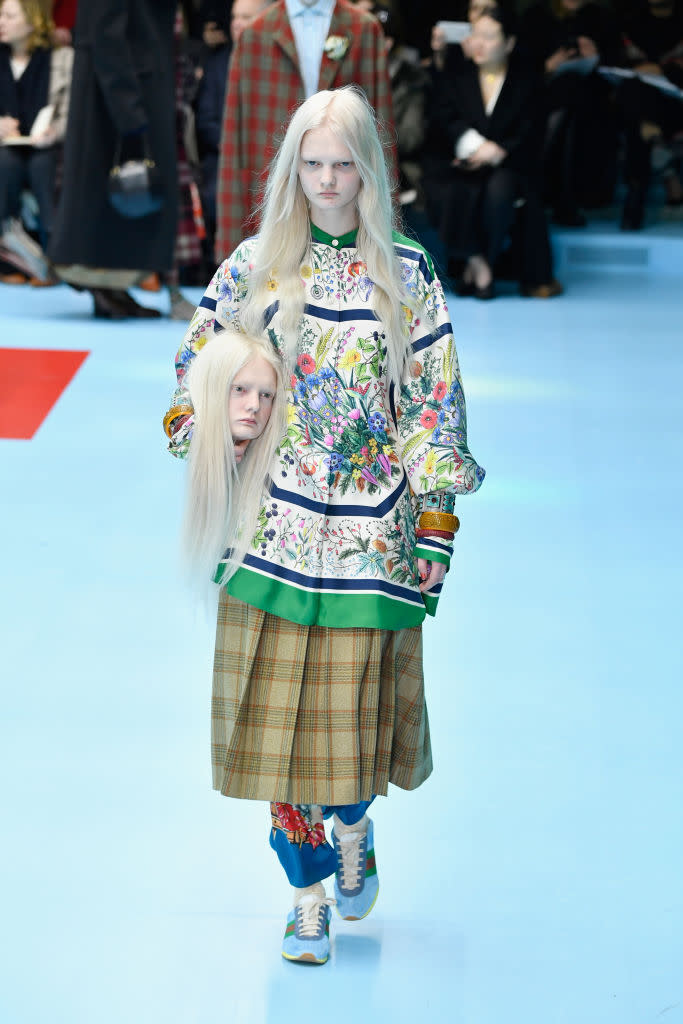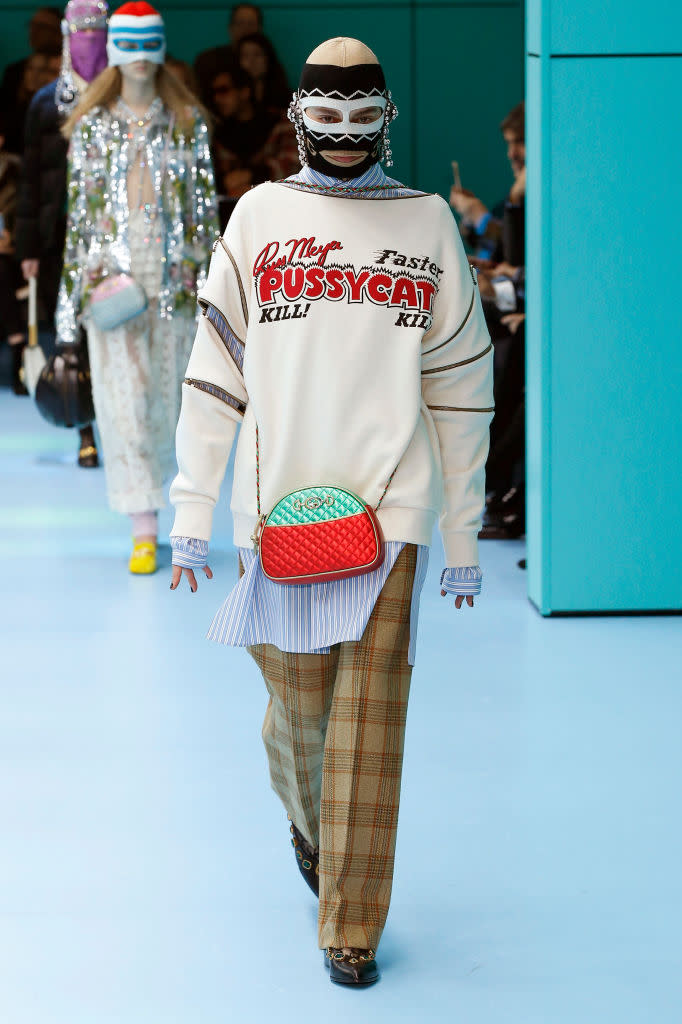Severed heads hold a sneaky feminist meaning at Gucci

On Wednesday afternoon during Milan Fashion Week, Gucci staged a spectacular yet peculiar fashion show that included “cyborg” models — which, upon a deeper look, possessed an underlying metaphorical feminist message.
In the Gucci show notes, creative director Alessandro Michele referenced A Cyborg Manifesto, written by Donna Haraway in 1984. In it, Haraway uses the concept of a “cyborg” to represent women, without the constraints of society’s traditional gender labels. As one Wired writer notes, the cyborg in Haraway’s piece “trashes the big oppositions between nature and culture, self and world that run through so much of our thought.”
It poses the idea that all of us are not “naturally made” — or rather, we are “constructed,” like a cyborg. And if “given the right tools, we can all be reconstructed.” That is to say, women aren’t born to be wives, born to work in the house, or “naturally” submissive and overly emotional people. Women can choose to be however they want to be.
Today, feminism is defined as “the advocacy of women’s rights on the ground of the equality of the sexes.” But in Gucci’s world, sexes and genders do not exist. So Michele raises a bigger question: Why let traditional gender constraints put forth by society stop women from moving forward with their goals and dreams?
Michele’s vision for Gucci includes models who are genderless: Men wear “women’s” clothing and vice versa, something he has done for several seasons now. He toys with the idea that in the future, traditional notions of men and women will no longer exist. As written in the show notes, “The collection goes further beyond, taking the shape of a genuine Cyborg Manifesto (D.J. Haraway), in which the hybrid is metaphorically praised as a figure that can overcome the dualism and the dichotomy of identity. The Cyborg, in fact, is a paradoxical creature keeping together nature and culture, masculine and feminine, normal and alien, psyche and matter.”

Michele continues, “Gucci Cyborg is post-human: it has eyes on its heads, faun horns, dragon puppies and doubling heads. It’s a biologically indefinite and culturally aware creature.” He refers to these “Gucci Cyborgs” as mongrels, which suggest indefinable, intermixed breeds.

In a show setting that mimicked a surgical operating room, models walked down the Gucci runway carrying their own severed “heads,” as well as an artificial baby dragon, chameleon, and snake, re-created for a different kind of world. The collection included Michele’s signature maximalist style, with beaded jackets layered atop patterned blouses and floral trousers underneath plaid skirts. Ruffled velvet dresses were styled with turbans, and knit balaclavas were paired with exaggerated metallic Victorian blouses.
There were several pop culture, cinematic, and athletic references too. Logomania was front and center, something the Gucci house is very familiar with. But instead of just using their brand, they focused on Paramount Pictures, the New York Yankees, and the San Francisco Giants, whose logos were all displayed on various cardigans and coats.
In one film reference, Michele designed a shirt with a feminist twist, showcasing the poster for the 1965 film Faster, Pussycat! Kill! Kill! which was initially deemed sexist in the ’60s but later hailed as a feminist classic.

Who knew that a collection that at first glance appeared so wild was advocating for a “post-human” version of feminism? It’s often difficult to predict what Alessandro Michele will do next, but this season surely takes the cake.
Read more from Yahoo Lifestyle:
• The complete NYFW trend guide for fall 2018
• All the prettiest, boldest, and most powerful pantsuits from New York Fashion Week
• Calvin Klein’s runway highlights Multiple Chemical Sensitivity disorder. What is it?
Follow us on Instagram, Facebook, and Twitter for nonstop inspiration delivered fresh to your feed, every day.


